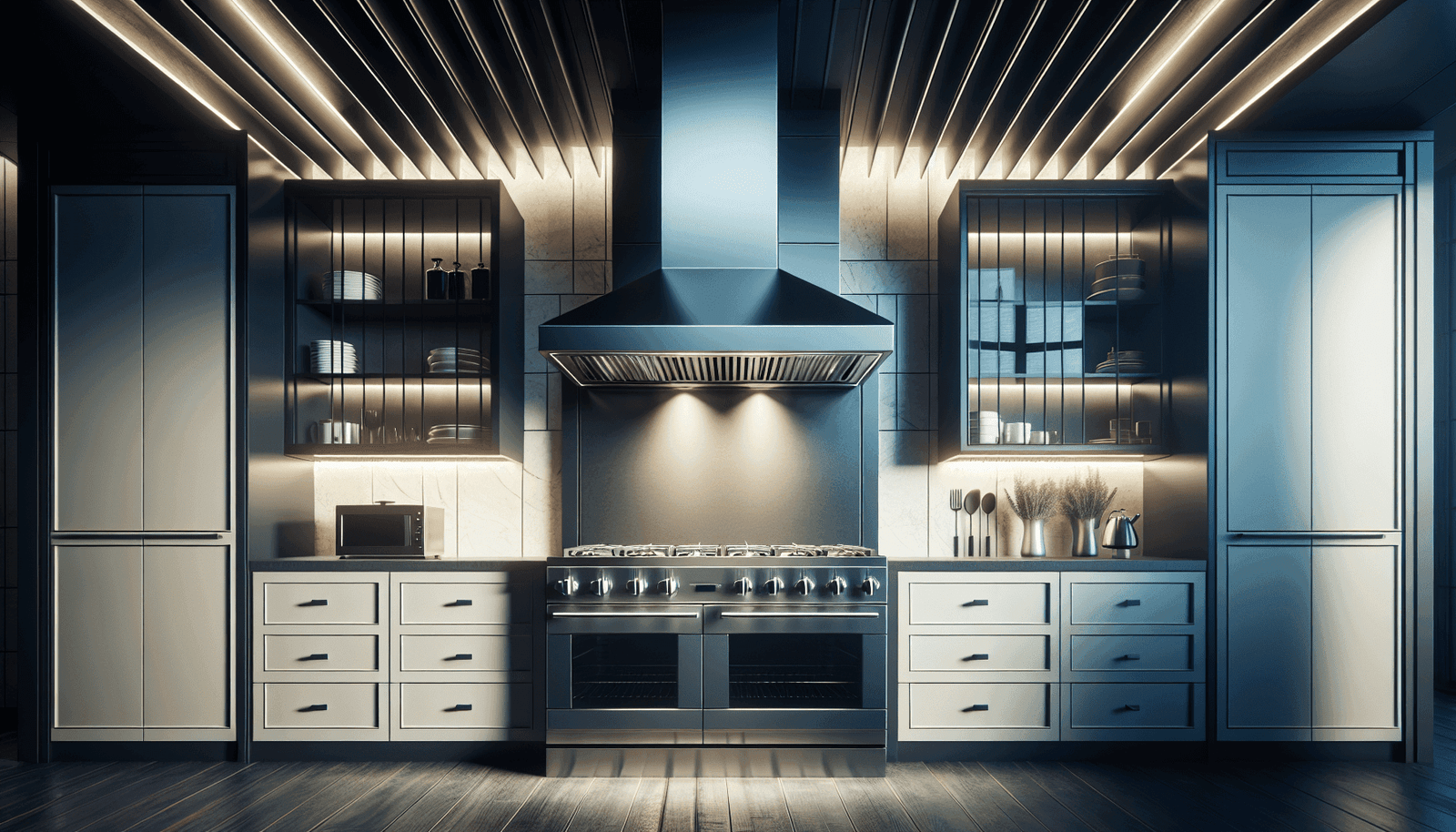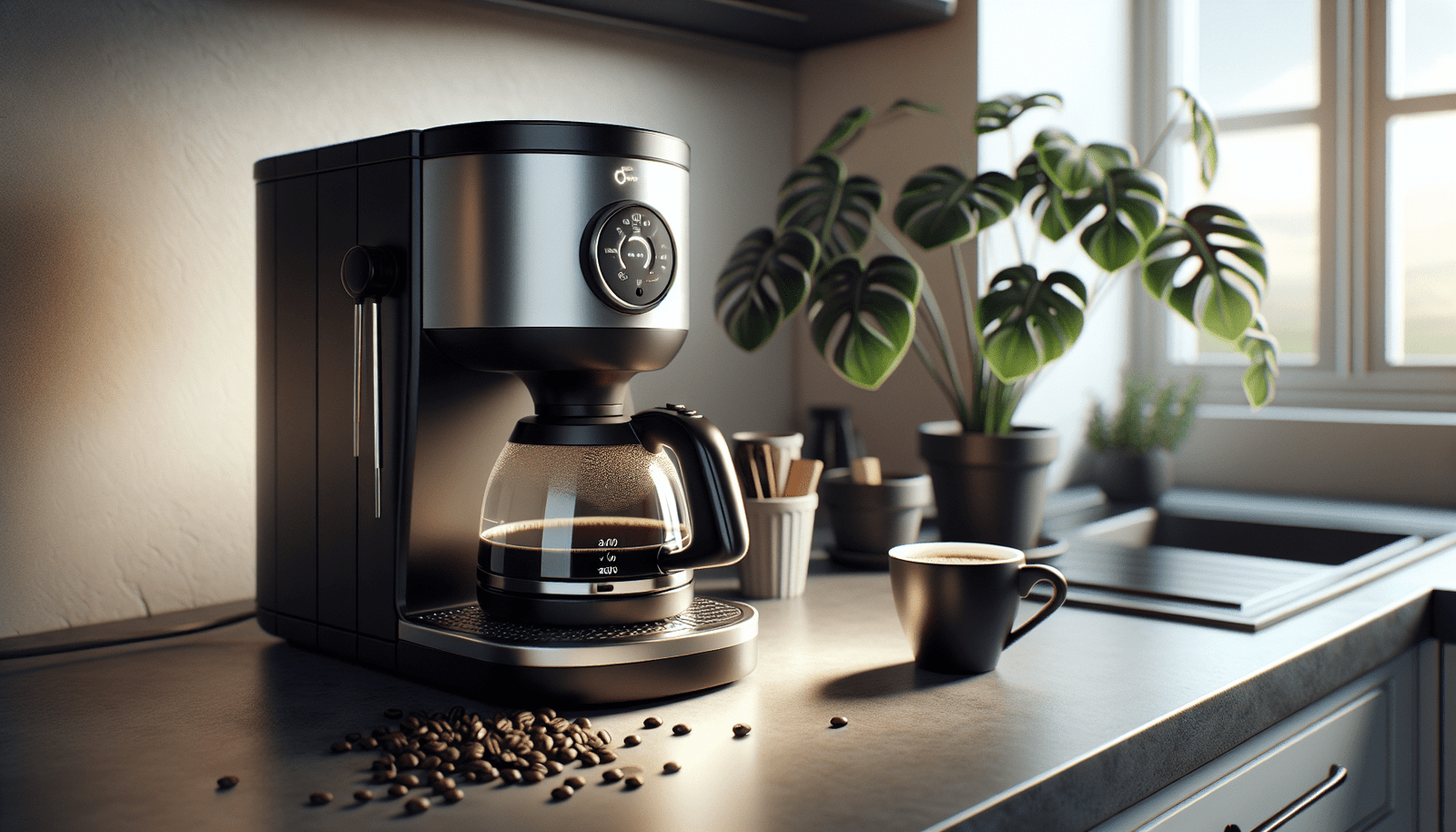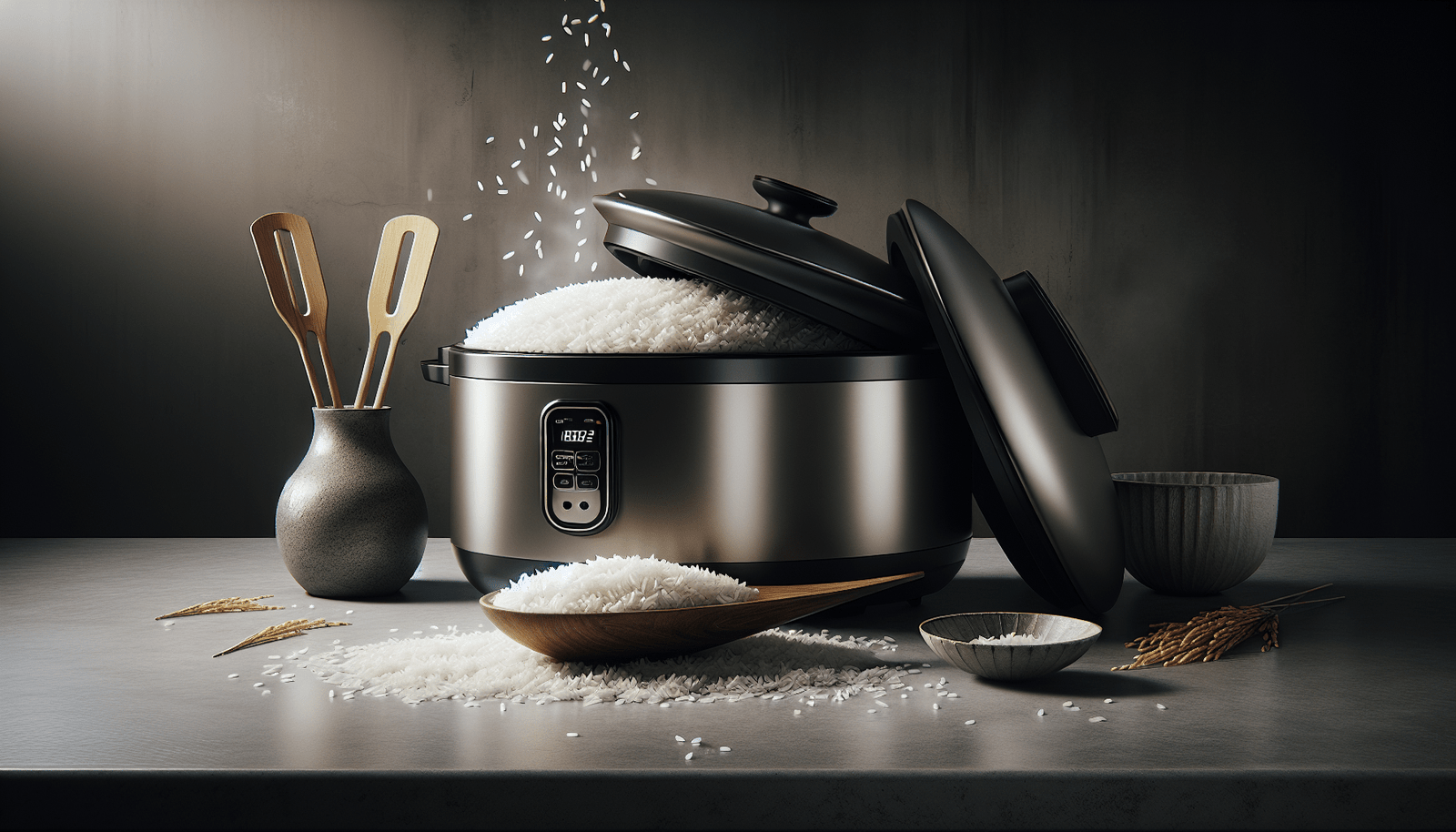Imagine stepping into a world where your culinary dreams aren’t just fantasies but realities waiting to be brought to life. That’s what Cooking Appliance World offers, with its promise to supply the best in kitchen cooking appliances, gadgets, utensils, and supplies. Embark on a journey with “The Ultimate Guide to Range Hoods,” crafted to be your compass in the vast sea of cooking technology. This guide isn’t merely a collection of products; it’s a pathway to transforming your kitchen into a bastion of efficiency, creativity, and joy. Whether you’re a budding home cook eager to enhance your kitchen routine or a seasoned chef aiming to upgrade your commercial operations, this comprehensive resource is tailored to meet all your needs. Discover the perfect blend of innovative design and functionality, and let your culinary adventure begin with the best range hoods on the market.
Understanding Range Hoods
Definition and Purpose
Welcome to a crucial aspect of your kitchen that you might often overlook – the range hood! A kitchen appliance designed to remove smoke, odors, heat, and steam from the air, a range hood is your kitchen’s best friend. It’s essentially a fan enclosed in a canopy installed above your stove or cooktop, keeping your kitchen air fresh and clean.
Types of Range Hoods
Range hoods come in various types, such as under-cabinet, wall-mounted, island, downdraft, and custom built-in hoods. Each has its unique installation requirements and aesthetic appeal, fitting into different kitchen designs and functions.
How Range Hoods Work
A range hood functions by using a mechanical fan to move air from your cooking area outside your home or through filters to clean and recirculate the air. Ducted hoods vent air outside, while ductless hoods use charcoal filters to purify the air before releasing it back into the kitchen.
Benefits of Installing a Range Hood
Installing a range hood in your kitchen comes with numerous benefits. It not only ensures your cooking area is free from smoke and unpleasant odors but also helps in maintaining a comfortable temperature. Additional benefits include preventing grease buildup on kitchen surfaces, enhancing lighting over the stove area, and potentially increasing your home’s value.
Choosing the Right Range Hood
Size and Installation Space
To select the right range hood, start by considering the size and installation space. The hood should match the width of your cooking surface for effective ventilation. Also, ensure your kitchen layout and available space can accommodate the range hood type you choose.
Ducted vs. Ductless Options
Deciding between ducted and ductless range hoods is crucial. Ducted hoods offer more efficient ventilation but require ductwork to vent outside. Ductless hoods, while more flexible in installation, may not be as effective because they recirculate the air.
Styles and Designs
From sleek modern designs to more traditional looks, range hoods come in various styles. Your choice can either make a statement or blend in with your kitchen’s overall design. Consider the aesthetic you wish to achieve when selecting a range hood.
Material and Build Quality
Materials and build quality greatly impact the longevity and performance of range hoods. Stainless steel is popular for its durability and ease of cleaning, but other materials like tempered glass or copper can also make a stylish statement.
Noise Levels
Noise level is an important consideration. Range hoods can be noisy, so look for models with acceptable decibel (dB) ratings or those with noise-reduction technologies.
Brand and Warranty Considerations
Choose a reputable brand with a solid warranty to ensure you’re covered in case of any defects or issues. Reading reviews and researching can help you find a reliable range hood.

Types of Range Hoods
Under-Cabinet Hoods
These are installed under the kitchen cabinet above your stove. They offer a space-saving solution and are typically ducted, though ductless options are available.
Wall-Mounted Hoods
Mounted on the wall, these hoods become a focal point in the kitchen. They are ideal for kitchens where the stove is against the wall without cabinets above it.
Island Hoods
Designed for stoves installed in a kitchen island, these hoods hang from the ceiling. Island hoods are stylish but require a more complex installation.
Downdraft Hoods
Innovative downdraft hoods draw air downward, making them an excellent option for minimalist kitchens where a hood hanging from the ceiling or mounted on a wall isn’t desirable.
Custom Built-In Hoods
For those with specific design needs, custom built-in hoods can be integrated into the kitchen cabinetry, offering a seamless look while providing efficient ventilation.
Features to Look for in a Range Hood
Airflow Capacity
Measured in cubic feet per minute (CFM), airflow capacity indicates the hood’s power. High CFM ratings mean better ventilation but often at the cost of higher noise levels.
Filter Types
Ducted hoods typically have aluminum mesh filters, while ductless hoods use charcoal filters to clean recirculated air. Some models offer dishwasher-safe filters for easy cleaning.
Lighting Options
Good lighting is crucial. Look for hoods with LED or halogen lighting to help illuminate your cooking area effectively.
Speed Settings
The more speed settings, the greater control you have over ventilation and noise levels. Look for models with at least 3 speed settings.
Smart Technology Integration
Some modern range hoods come with smart technology, allowing you to control them via your smartphone or integrate them with other smart home systems.

Installation Guide
Preparation and Safety
Before installation, ensure you have all necessary tools and supplies. Always prioritize safety by turning off electricity and following manufacturer instructions closely.
Tools Required for Installation
Common tools include a drill, screwdriver, level, and tape measure. The exact tools needed might vary based on your range hood model and type.
Step-by-Step Installation Process
While the installation process varies by type, it generally involves mounting the hood, connecting the ductwork or installing charcoal filters for ductless models, and hooking up the electrical connections.
Ductwork Considerations
For ducted hoods, proper ductwork alignment is crucial. Ensure the ducting is the correct size and properly sealed to prevent air leakage.
Common Installation Challenges
Challenges might include aligning the hood perfectly, dealing with insufficient space for ductwork, or handling complex electrical wiring. Hiring a professional is recommended if you encounter such issues.
Maintenance and Cleaning
Regular Cleaning Schedule
To ensure optimal performance, clean your range hood regularly. This includes wiping the exterior and cleaning the filters.
Cleaning the Filters
For aluminum mesh filters, wash them in soapy water or in the dishwasher if they are dishwasher-safe. Replace charcoal filters as per manufacturer recommendations.
Dealing with Grease Buildup
Prevent grease buildup by cleaning the interior surfaces and fan blades regularly using a degreaser.
Maintaining External Surfaces
Keep the external surfaces shiny and clean by using non-abrasive cleaners suitable for the material of your hood.
Troubleshooting Common Issues
Common issues include reduced suction, noisy operation, and lighting malfunction. Consult the manufacturer’s manual for troubleshooting tips or contact customer support.
Enhancing Kitchen Ventilation
The Importance of Good Ventilation
Good ventilation is key to maintaining a comfortable, healthy kitchen environment by removing excess heat, odors, and contaminants.
Supplementary Ventilation Options
Besides range hoods, consider installing additional ventilation solutions like ceiling fans or opening windows to aid in air circulation.
Balancing Air Pressure
Ensuring your kitchen is not too airtight is important as it can affect the efficiency of your range hood. Having a source of make-up air can help balance indoor air pressure.
Tips for Maximizing Efficiency
Use your range hood every time you cook, keep filters clean, and ensure the ductwork is properly sealed and insulated to maximize efficiency.
Energy Efficiency and Range Hoods
Energy-Saving Models
Look for energy-efficient range hoods that have an ENERGY STAR rating. These models consume less electricity, reducing your utility bills and environmental impact.
Comparing Energy Consumption
When selecting a range hood, compare the energy consumption of different models. Consider the hood’s wattage and how it translates to your energy bill.
LED vs. Halogen Lighting
Choose hoods with LED lighting, which consume less energy and last longer than halogen lights, for additional energy savings.
Tips for Reducing Energy Usage
Use the lowest effective fan setting to minimize energy use. Also, utilizing natural ventilation when possible can help reduce reliance on your range hood.
Design and Aesthetics
Matching Range Hoods to Kitchen Style
Your range hood should complement your kitchen’s style. Whether you’re going for a traditional, modern, or farmhouse look, there’s a range hood to match.
Color and Material Choices
Stainless steel is a popular choice due to its durability and sleek look, but don’t be afraid to explore other materials and colors that fit your kitchen’s theme.
Innovative Design Features
From seamless touch controls to retractable designs, modern range hoods come with innovative features that enhance both functionality and aesthetics.
Customization Options
If you can’t find the perfect fit, consider customizing a range hood to meet your exact specifications, ensuring it fits seamlessly with your kitchen’s design.
FAQs
What is the ideal CFM for my kitchen?
The ideal CFM depends on your cooking habits and kitchen size. A general rule is that for every 10,000 BTUs your stove generates, you need 100 CFM of ventilation power.
How often should I replace the filters?
Aluminum mesh filters should be cleaned every 1-2 months, while charcoal filters in ductless hoods need replacement every 4-6 months, depending on usage.
Can I install a range hood myself?
While it’s possible to install a range hood yourself, consider seeking professional help for complex installations, especially those involving ductwork or electrical wiring.
Do I need a ducted range hood?
A ducted range hood is recommended if you do a lot of heavy cooking that generates smoke, steam, and grease. However, for less frequent cooking or when ductwork installation is not feasible, a ductless model can be a good alternative.
What is the best way to reduce noise from my range hood?
Look for range hoods with low dB ratings or those with sound-dampening technology. Using your hood on the lowest necessary setting can also help minimize noise.


